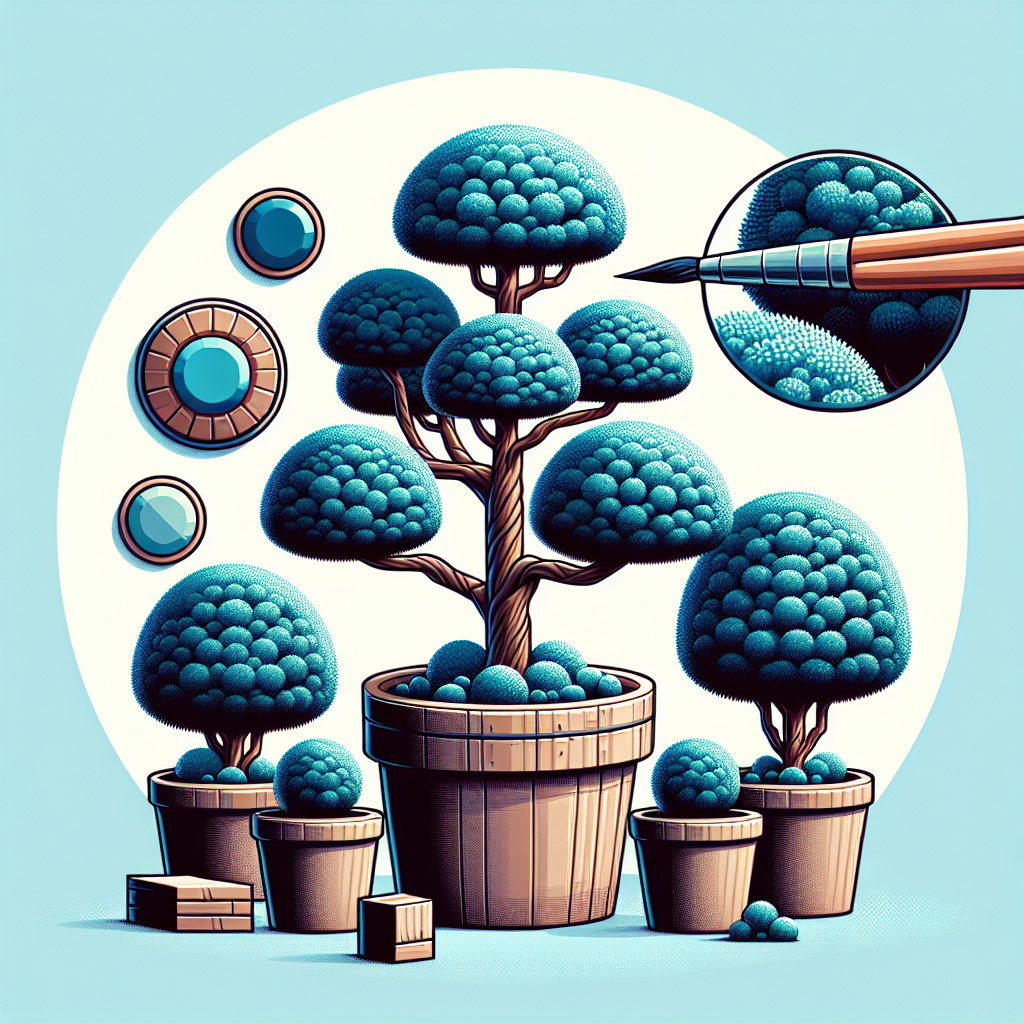Blue Point Juniper is a popular evergreen shrub that is often grown in pots for its unique blue-green foliage and graceful shape. Cultivating Blue Point Juniper in pots can be a rewarding experience, allowing you to enjoy the beauty of this plant in a small space, such as a patio or balcony. In this article, we will discuss the steps involved in growing Blue Point Juniper in pots, including selecting the right container, soil and watering requirements, as well as tips for pruning and fertilizing.
Selecting the Right Container
When growing Blue Point Juniper in pots, it is important to choose a container that is large enough to accommodate the plant’s root system and allow for proper drainage. A 12- to 14-inch wide pot with drainage holes at the bottom is ideal for most Blue Point Junipers. Make sure that the container is made of a durable material such as plastic or ceramic, as these materials are less likely to crack or break over time.
Soil Requirements
Blue Point Junipers prefer well-draining soil that is slightly acidic to neutral (pH 6.0-7.0). A good potting mix for Blue Point Junipers can be made by combining equal parts of peat moss, perlite, and pine bark fines. This mixture provides good drainage while retaining moisture, which is important for the health of the plant.
Watering Requirements
Proper watering is essential for the health of Blue Point Junipers grown in pots. Water your plant when the top inch of soil feels dry to the touch, but be careful not to over-water as this can lead to root rot. During hot weather or dry periods, you may need to water your plant more frequently. However, it is important to allow the soil to dry out slightly between waterings to avoid waterlogged conditions.
Light Requirements
Blue Point Junipers prefer full sun but can also tolerate partial shade. When growing Blue Point Junipers in pots, place them in a location where they will receive at least six hours of direct sunlight each day. If you are growing your plant indoors, place it near a south-facing window where it can receive ample sunlight.
Pruning and Fertilizing
Regular pruning is essential for maintaining the shape and size of Blue Point Junipers grown in pots. Prune your plant in early spring before new growth begins by removing any dead or diseased branches and shaping the plant as desired. Use sharp pruning shears to make clean cuts and avoid damaging the remaining branches.
Fertilize your Blue Point Juniper once a year in early spring with a slow-release fertilizer formulated specifically for evergreen shrubs. Follow the manufacturer’s instructions on how much fertilizer to use based on the size of your plant.
Pests and Diseases
Blue Point Junipers are relatively pest-free but may occasionally be susceptible to spider mites or scale insects. To prevent infestations, inspect your plant regularly for signs of pests such as webbing or sticky residue on leaves. If you notice any pests, treat your plant with an insecticidal soap or neem oil spray according to label directions.
In terms of diseases, Blue Point Junipers may develop root rot if they are over-watered or planted in soil that does not drain well. To prevent root rot, ensure that your plant’s container has proper drainage holes at the bottom and use a well-draining potting mix.
Winter Care
Blue Point Junipers are hardy plants that can withstand cold temperatures down to -10 degrees Fahrenheit (-23 degrees Celsius). However, if you live in an area with harsh winters, consider moving your potted Blue Point Juniper indoors during extreme cold snaps.
During winter months when growth slows down significantly,
watering requirements will decrease drastically.
Soil moisture should be monitored by sticking one finger into
the soil up-to-the first joint.
If it feels moisture-less then only water them.
Make sure they get enough sunlight during winter months
and ensure there’s proper ventilation around their location.
In conclusion,
Growing Blue Point Juniper in pots can be a wonderful way
to enjoy this beautiful evergreen shrub even if you have limited space.
By following these tips on selecting the right container,
soil requirements,
watering needs,
light requirements,
pruning techniques,
fertilizing recommendations,
pest control measures,
disease prevention strategies,
and winter care precautions,
you can successfully cultivate Blue Point juniper
in containers and enjoy its unique beauty all year round.
With proper care and attention,your potted blue point juniper will flourish
and add beauty & elegance wherever it’s placed!













